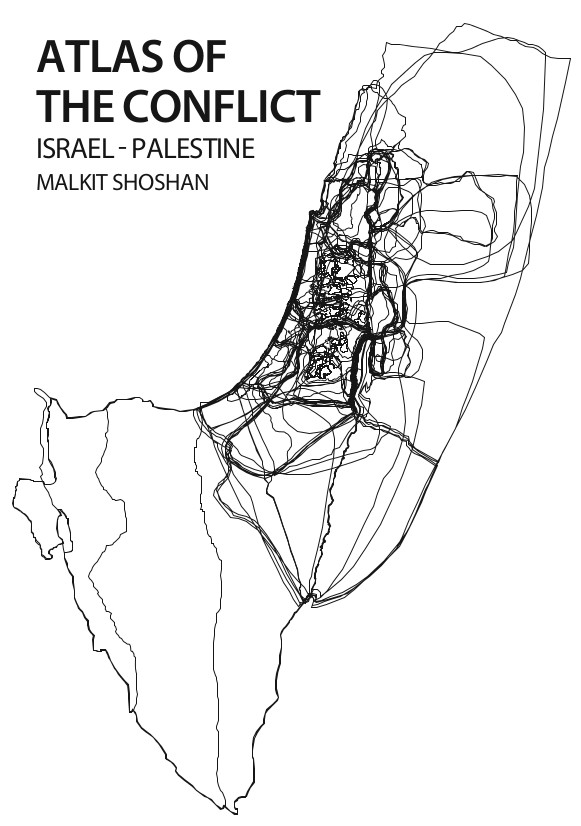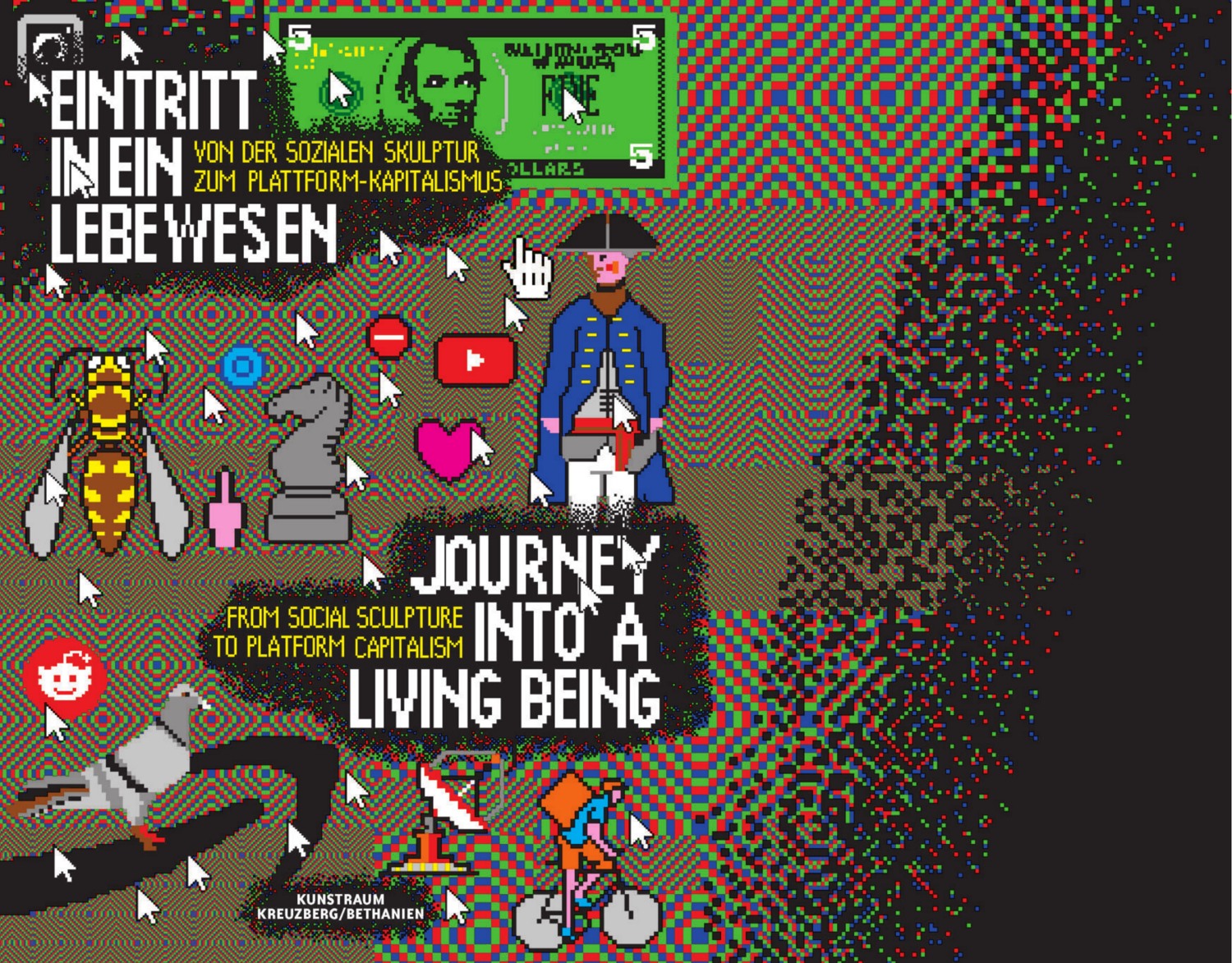Malkit Shoshan: Atlas Of The Conflict, Israel-Palestine (2010/2012)
Filed under book | Tags: · architecture, history, israel, palestine, politics, urban planning, war

The Atlas of the Conflict maps the processes and mechanisms behind the shaping of Israel-Palestine over the past 100 years. Over 500 maps and diagrams provide a detailed territorial analysis of the Israeli-Palestinian conflict, explored through themes such as borders, settlements, land ownership, archaeological and cultural heritage sites, control of natural resources, landscaping, wars and treaties. A lexicon, drawing on many different information sources, provides a commentary on the conflict from various perspectives. As a whole, the book offers insights not only into the specific situation of Israel-Palestine, but also into the phenomenon of spatial planning used as a political instrument.
In the early 20th century, waves of Jewish immigrants swept across the country of Palestine, seeking to impress onto it a new nation. It took over 50 years of local and international transitions to redeem the land; dressing it with uniformity, a new identity, a new landscape, a new people and a new culture while ignoring an existing landscape, an existing people, an existing culture and an existing nation.
In 1948 one nation celebrated its formal recognition by the international community and the other grieved amidst its ruins. This atlas of the Israeli-Palestinian conflict maps the processes and mechanisms behind the modification of the country during the past 100 years, both on a policy level and in its implementations on the ground. With over 500 maps and diagrams this is an indispensable reference book on the conflict. There are lessons to be learnt from the atlas on a broader front, from the withdrawal of the colonial powers in the early 20th century to the forced division of the Middle East and the ongoing wars and disputes over territory and resources.
Maps, plans and diagrams give a neutral, apolitical overview of the protracted conflict in Israel and Palestine.
The book won the Leipzig Art Book Fair’s Golden Letter award for “most beautiful book in the world.” Malkit Shoshan is an Amsterdam-based Israeli architect and founder/director of FAST (Foundation for Achieving Seamless Territory).
Originally published by 010 Publishers, Rotterdam, 2010
Publisher Publication Studio, Portland, OR, 2012
Jank Edition series
ISBN 9789064506888
478 pages
review (Yousef Munayyer, Palestine Center)
review (Esther Zandberg, Haaretz)
review (Régine Debatty, we-make-money-not-art.com)
more reviews
PDF (low resolution, 82 MB)
PDF (high resolution, 389 MB)
Eintritt in ein Lebewesen. Von der sozialen Skulptur zum Plattform-Kapitalismus / Journey Into a Living Being: From Social Sculpture to Platform Capitalism (2020) [German/English]
Filed under catalogue | Tags: · art, capitalism, data, internet, platform, privacy, social media, surveillance

“In 1977, Joseph Beuys presented his installation Honey Machine at the Workplace at documenta 6, in which tubes ran into the exhibition rooms, through which honey was pumped. The work symbolized Beuys’ idea of the expanded concept of art and of social sculpture. “Everyone is an artist” is his famous motto –not because everyone can paint, dance or make music, but because we all contribute through our productivity to a collective creativity that can be weighed as real capital and societal potential, to which Beuys ascribed the formula “art = capital.” Honey as the “spiritual nutrition of the cosmos” (Beuys) is the embodiment of this collective creativity.
These days, we deliver our creative “honey” voluntarily to internet companies like Google, Facebook, Twitter, TikTok or Amazon. Computers and smartphones, online speakers and fitness wristbands upload a large portion of our data to these companies’ servers. Even rental bikes and e-scooters collect our location data. Our every click, every Like, every photo posted and every online comment is fuel for the companies of “surveillance capitalism” (Shoshana Zuboff). They use our data to sell advertising, predict our behavior, optimize their algorithms and AI, and to keep competing companies out of the market as much as possible.
The exhibition Journey Into a Living Being takes its name from a lecture Beuys gave on social sculpture at documenta. It traces the conceptual trajectory to the present, in which the internet and social media are replete with offers of creative services, but where only few reap the financial rewards. It brings together artworks spanning forty years with the aim of deciphering what has come to pass between the development of social sculpture and the rise of platform capitalism and the gig economy, and how this process is reflected in art.”
Edited by Tilman Baumgärtel
Publisher Kunstraum Kreuzberg/Bethanien, Berlin, 2020
ISBN 9783000652608, 3000652604
111 pages
Exhibition (18.5-16.8.2020)
WorldCat
PDF (6 MB)
Comment (0)The New [New] Corpse (2015)
Filed under book | Tags: · art, body, performance, poetry

“The New [New] Corpse explores current representations of the body in which the human figure appears fragmented, distorted, or emphatically absent in a carefully curated selection of poetry, translation, essays, and exhibition documentation. With a mission statement provided by an artist’s corporation, to a poem about corpses, and an essay about how Billy the Kid changed American mythology, these works emphasize the strange and residual power of material bodies, distorted and skewed through representation. It is produced in conjunction with a group exhibition of the same name.”
With written contributions from Antibody Corporation, Rebecca Beachy, Érik Bullot, Judith Goldman, Julia Drescher, Every house has a door (Matthew Goulish & Lin Hixson), Christy LeMaster, Valeria Luiselli, Jesse Malmed, CJ Martin, Nathanaël, Caroline Picard, Martine Syms, John Tipton, Zoe Todd, & Fo Wilson. Featuring artists Benjamin L. Aman & Marion Auburtin, Amelia Charter, Joseph Grigley, Jane Jerardi, Young Joon Kwak, Jason Lazarus, Jesse Malmed, Carlos Martiel, Heather Mekkelson, Jefferson Pinder, Aay Preston-Myint, Rachel Niffenegger, Xaviera Simmons, Shane Ward, & Shoshanna Weinberger.
Edited by Caroline Picard
Publisher The Green Lantern Press, July 2015
ISBN 9780988418578
144 pages
via Caroline Picard
PDF (22 MB)
Comment (0)
